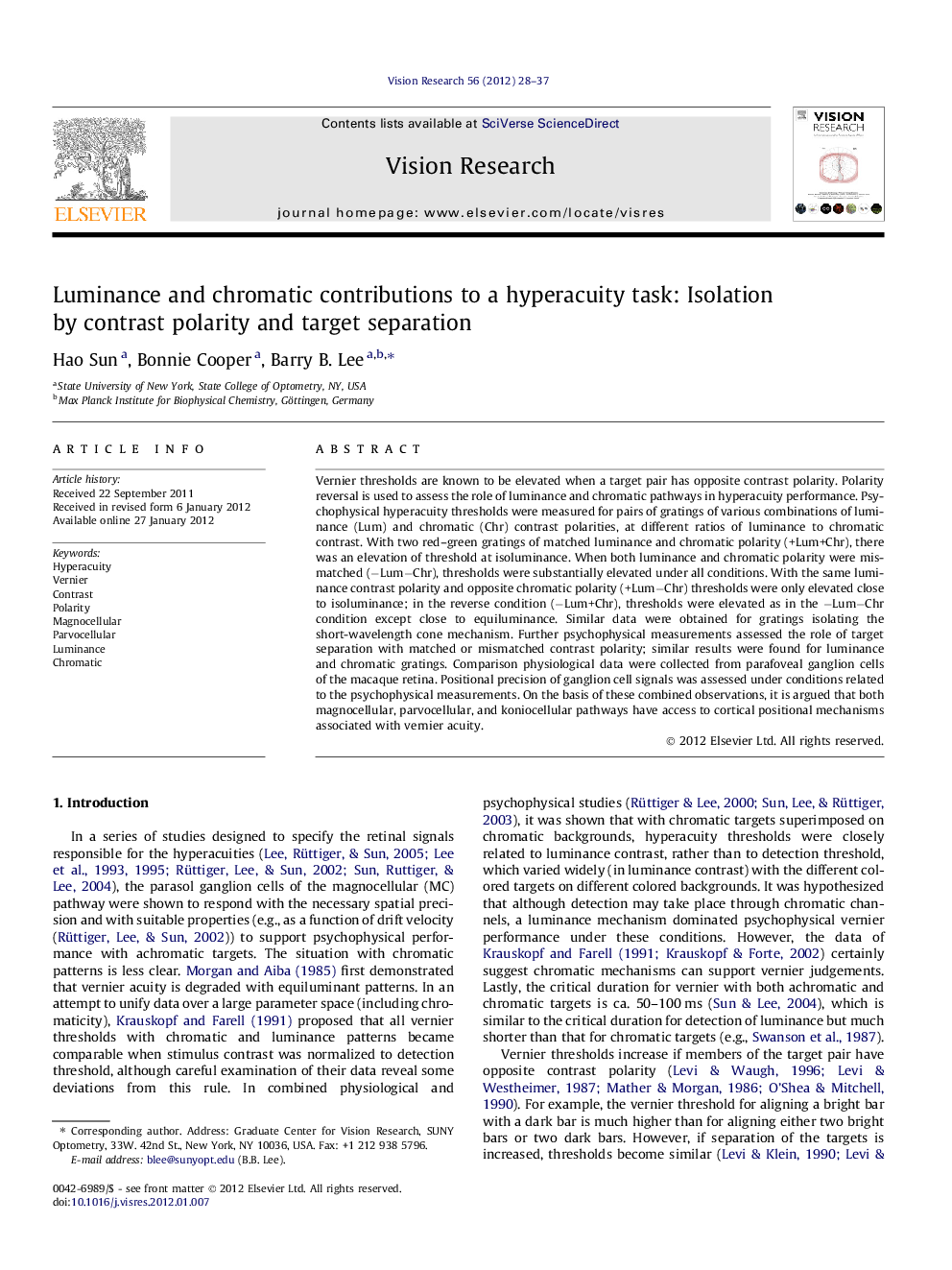| کد مقاله | کد نشریه | سال انتشار | مقاله انگلیسی | نسخه تمام متن |
|---|---|---|---|---|
| 4034054 | 1603238 | 2012 | 10 صفحه PDF | دانلود رایگان |

Vernier thresholds are known to be elevated when a target pair has opposite contrast polarity. Polarity reversal is used to assess the role of luminance and chromatic pathways in hyperacuity performance. Psychophysical hyperacuity thresholds were measured for pairs of gratings of various combinations of luminance (Lum) and chromatic (Chr) contrast polarities, at different ratios of luminance to chromatic contrast. With two red–green gratings of matched luminance and chromatic polarity (+Lum+Chr), there was an elevation of threshold at isoluminance. When both luminance and chromatic polarity were mismatched (−Lum−Chr), thresholds were substantially elevated under all conditions. With the same luminance contrast polarity and opposite chromatic polarity (+Lum−Chr) thresholds were only elevated close to isoluminance; in the reverse condition (−Lum+Chr), thresholds were elevated as in the −Lum−Chr condition except close to equiluminance. Similar data were obtained for gratings isolating the short-wavelength cone mechanism. Further psychophysical measurements assessed the role of target separation with matched or mismatched contrast polarity; similar results were found for luminance and chromatic gratings. Comparison physiological data were collected from parafoveal ganglion cells of the macaque retina. Positional precision of ganglion cell signals was assessed under conditions related to the psychophysical measurements. On the basis of these combined observations, it is argued that both magnocellular, parvocellular, and koniocellular pathways have access to cortical positional mechanisms associated with vernier acuity.
► Contrast polarity can determine luminance and chromatic contributions to hyperacuity.
► Opposite chromatic polarity did not affect thresholds if luminance contrast was present.
► We also considered target separation and physiological data.
► Luminance and chromatic pathways both have similar access to hyperacuity.
Journal: Vision Research - Volume 56, 1 March 2012, Pages 28–37